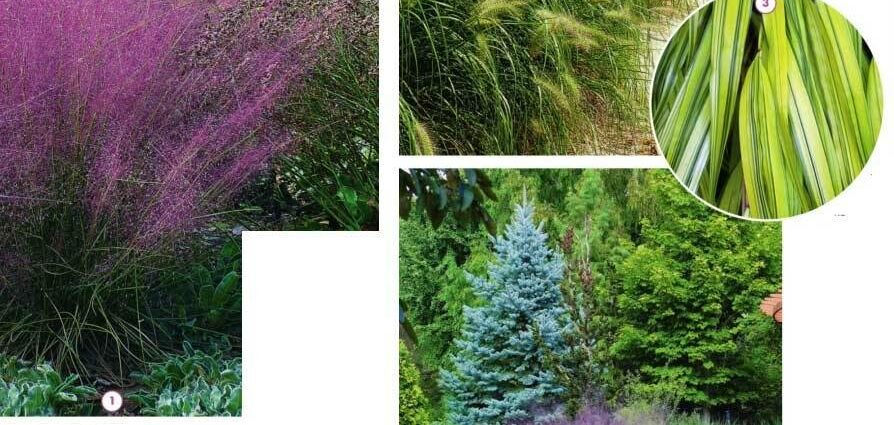Contents
Decorative cereals in landscape design, names
Gardeners grow ornamental cereals as an independent decoration of the garden plot or local area. They are also used to create original compositions. Given the variety of species, everyone will find the right plant for the landscape.
Types and names of ornamental cereals
In nature, there are a large number of cereals, which differ from each other in size, shape, color. In addition, plants have different requirements for soil and growing conditions.
Ornamental cereals in the landscape will successfully emphasize the style and taste of the gardener
It is not difficult to grow the following types on the site:
- “Blue fescue”. This cereal is a lush bush with needle-like leaves. During flowering, inflorescences in the form of panicles are formed on it. They can be gray-green, silvery or blue;
- “Bulbous ryegrass”. This plant has long, pointed leaves with light longitudinal stripes;
- “Maned barley” forms dense shrubs with spikelets of pinkish-purple hue;
- “Imperata cylindrical” has multi-colored leaves, and during flowering, inflorescences bloom on it in the form of panicles of a light silver shade;
- “Cortaderia” has long, dull green leaves. It is distinguished by large and lush inflorescences of white, pink and pale yellow;
- “Miscanthus” is a voluminous bush with white, light pink and pink spikelets.
“Fescue” and “Ryegrass” are low-growing shrubs with a maximum height of 40 cm. “Barley” and “Imperata” grow up to 90 cm and are medium-sized plants. And tall shrubs “Cortaderia” and “Miscanthus” can grow over a meter.
These are not all cereals that are decorative. There are more than 200 names and species in the world.
The use of ornamental cereals in landscape design
Cereals are versatile plants that blend harmoniously into any landscape. They can be used in combination with other crops or grown on their own. The main thing is to choose a successful combination of shades, take into account the area of the site, the size and spreading of the bush.
For a large and spacious area, you should select tall, huge and lush views, for example, a cortaderia, which can reach 3 m in height. In a compact and cozy garden, it is better to grow undersized species. Plant an evergreen oat with white ears along the curb or paths.
Certain species, for example, large manna, marsh iris or reeds are ideal for decorating a pond or reservoir
Combine cereals with other flowers in your garden. They look good with conifers and roses. And in a duet with curly vines, they will become the perfect decor for a fence or walls at home.
Choose the right cereals for your site and use them wisely in landscaping.










